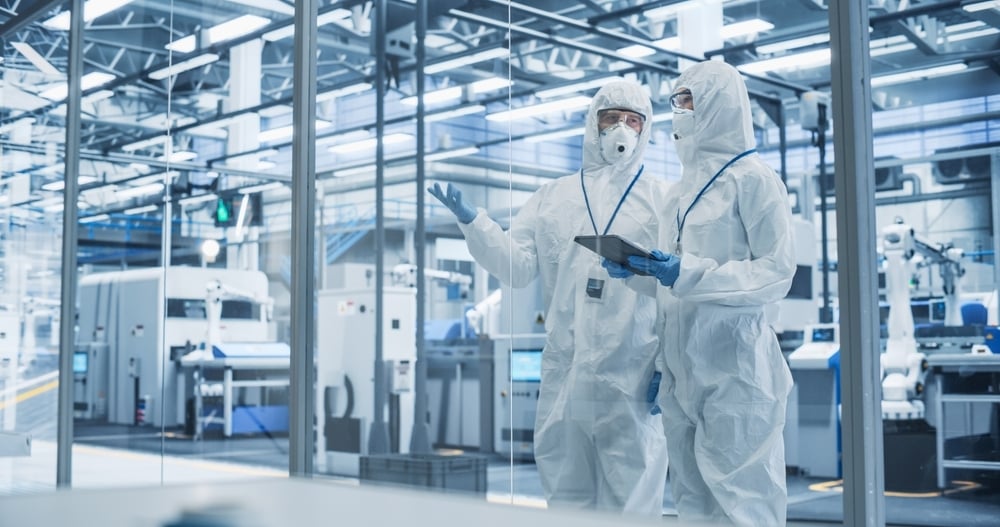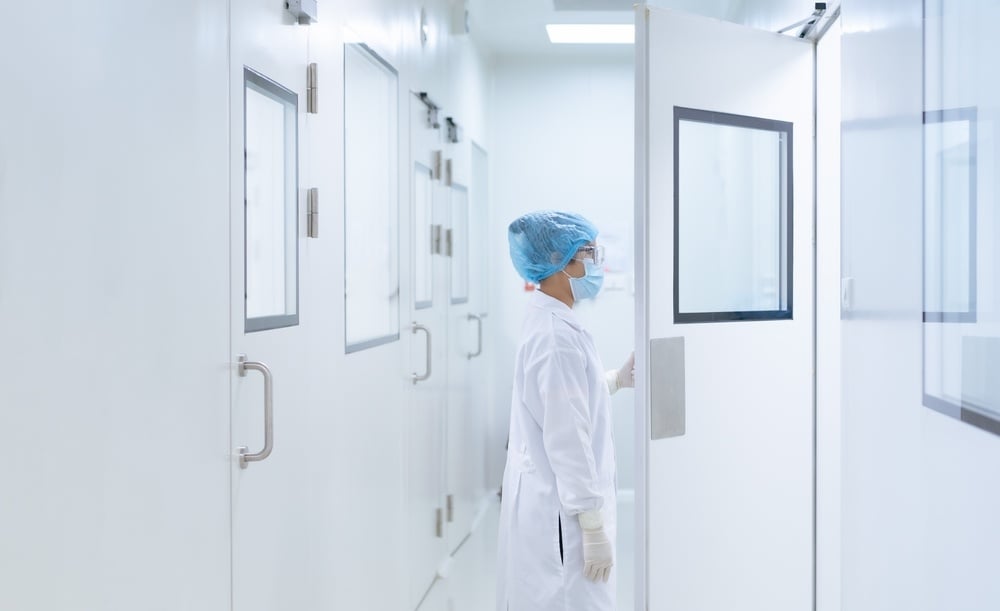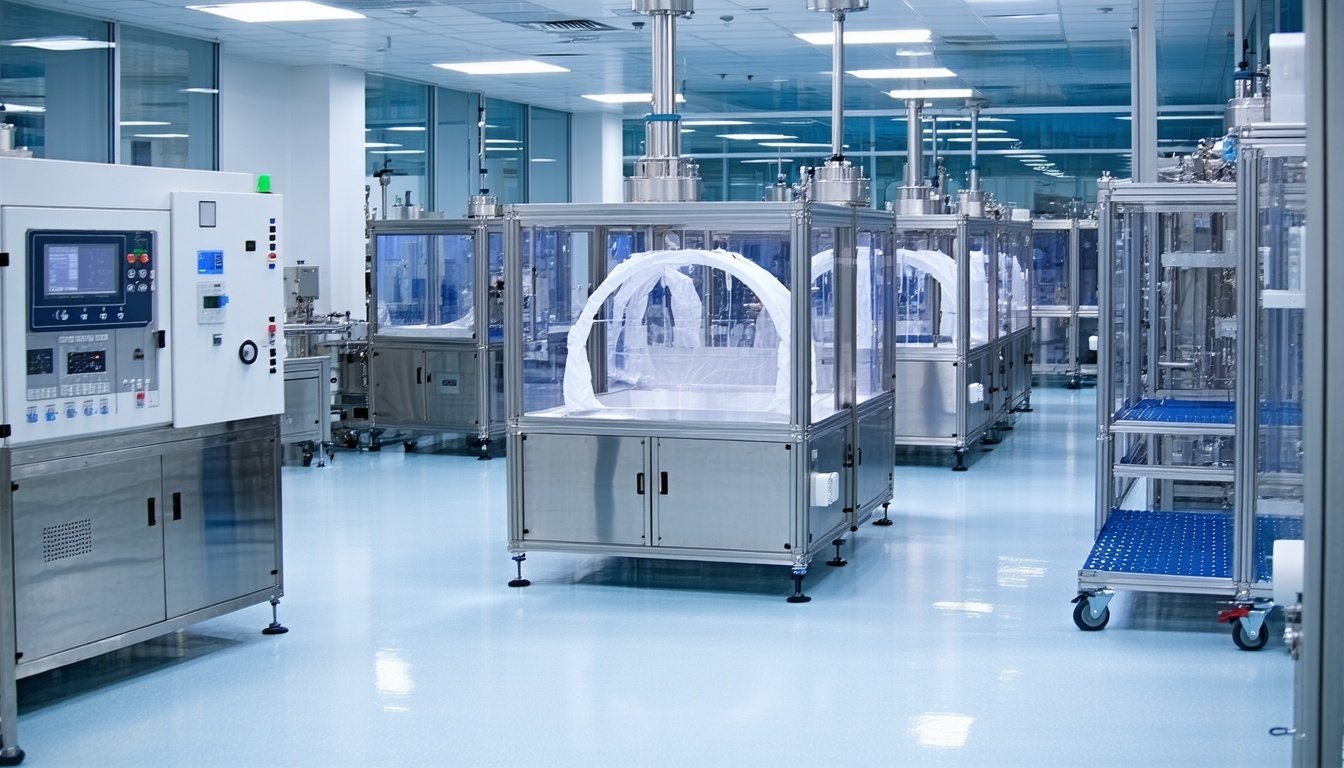Cleanroom vs. Controlled Environment: Understanding Their Critical Differences

In highly regulated industries where contamination control is critical, the terms cleanroom and controlled environment are often used interchangeably—but they shouldn’t be. They represent two distinct levels of environmental control.
Understanding the differences between cleanrooms and controlled environments is necessary for organizations looking to ensure regulatory compliance, maintain product integrity, and optimize operational efficiency.
What Is a Controlled Environment?
A controlled environment is a space designed to manage certain environmental factors like temperature, humidity, and airflow. While these spaces are built to support product quality and consistency, they do not adhere to strict airborne particle count limits like cleanrooms do.
Controlled environments are typically used in industries where some level of contamination control is needed but not to the extreme standards of a cleanroom. These spaces often have temperature and humidity control, positive or negative air pressure zones, basic filtration systems, and standard surface finishes for cleanliness.
Examples of Controlled Environments
Controlled environments are used across many industries that demand elevated, but not stringent, levels of cleanliness, such as:
- Life sciences labs performing general research
- Pharmaceutical compounding rooms that don’t require aseptic conditions
- Food processing areas needing hygienic but not sterile environments
- Electronics assembly zones with basic dust mitigation
In these settings, contamination control supports product quality and workplace safety, but particle count isn’t regulated to the level required in cleanroom-certified spaces.
What Is a Cleanroom?
A cleanroom is a highly controlled space engineered to maintain extremely low levels of airborne particles, microorganisms, and chemical vapors. Cleanrooms are governed by strict regulatory standards, such as ISO 14644-1, which defines cleanliness classes based on particles per cubic meter of air.
Cleanroom design goes far beyond temperature or humidity control. It incorporates:
- HEPA or ULPA filtration systems to remove up to 99.9995% of airborne particles
- ISO classification systems ranging from ISO Class 1 (most stringent) to ISO Class 9
- Meticulously designed airflow and pressurization patterns
- Materials and finishes that resist particle generation
- Strict gowning procedures and personnel products
- Regular validation and testing to verify compliance
Examples of Cleanrooms
Cleanrooms are used in applications where even microscopic contamination can cause critical failures, such as:
- Biotechnology and pharmaceutical manufacturing
- Semiconductor and microelectronics production
- Aerospace component assembly
- Medical device fabrication
To meet the rigorous demands of these applications, cleanrooms must be validated, certified, and continuously monitored.
Side-by-side Comparison: Controlled Environments vs. Cleanrooms
|
Feature |
Controlled Environment |
Cleanroom |
|
Airborne Particle Limits |
Not regulated by ISO standards |
Must meet ISO 14644-1 classification for particles/m3 |
|
Filtration |
Standard filtration (e.g., MERV-rated filters) |
HEPA or ULPA filters to remove fine particles |
|
Design Complexity |
Moderate: focuses on temperature and humidity control |
High: includes airflow modeling, pressure cascades, clean finishes |
|
Construction Cost |
Lower: basic mechanical systems |
Higher: specialized HVAC, monitoring, materials, and finishes |
|
Regulatory Oversight |
May be subject to general industry guidelines (e.g. FDA, GMP) |
Highly regulated (FDA, GMP, ISO, USP <797> and <800>) |
|
Applications |
Food processing, R&D labs, general pharmaceutical compounding |
Sterile drug manufacturing, microelectronics, aerospace, gene therapy |
|
Validation & Testing |
Not typically required |
Required during commissioning and at regular intervals |
How to Choose Between a Cleanroom and Controlled Environment
When planning a controlled space, several factors should guide your decision between a cleanroom and controlled environment.
1. Application Sensitivity
Does your practice involve sterile products, micro-scale electronics, or aseptic manufacturing? If so, a cleanroom is likely required. If general cleanliness is sufficient, a controlled environment may meet your needs.
2. Regulatory Requirements
Certain applications are governed by strict industry standards. For example, USP <797> and <800> pharmaceutical compounding standards require cleanroom conditions. Conversely, some food processing facilities may only need HACCP or GMP-compliant controlled environments.
3. Budget Constraints
Controlled environments are less expensive to build and operate than cleanrooms. If your application doesn’t demand particle-level control, a controlled environment is the more cost-effective option.
4. Compliance and Testing Needs
Do you need regular environmental monitoring, airflow balancing, and particle testing? If so, cleanroom compliance will be necessary. Controlled environments rarely require formal certification or performance validation.
5. Growth and Scalability
If your facility may one day require ISO-classified space, consider designing a controlled environment with future conversion in mind. Working with an experienced design-build firm ensures your infrastructure can scale efficiently.
Let Us Help You Decide
Choosing between a cleanroom and controlled environment isn’t a one-size-fits-all decision. It requires balancing compliance, cost, risk, and operational goals. That’s where we can help.
Our team specializes in designing and building custom environmental solutions—from ISO-certified cleanrooms to controlled environments—for clients across automotive, aerospace, semiconductor, and medical device industries. Whether your priority is sterility, safety, or scalability, we’ll deliver a turnkey solution tailored to your exact needs.
For help selecting, designing, and building your new space, get in touch here.


